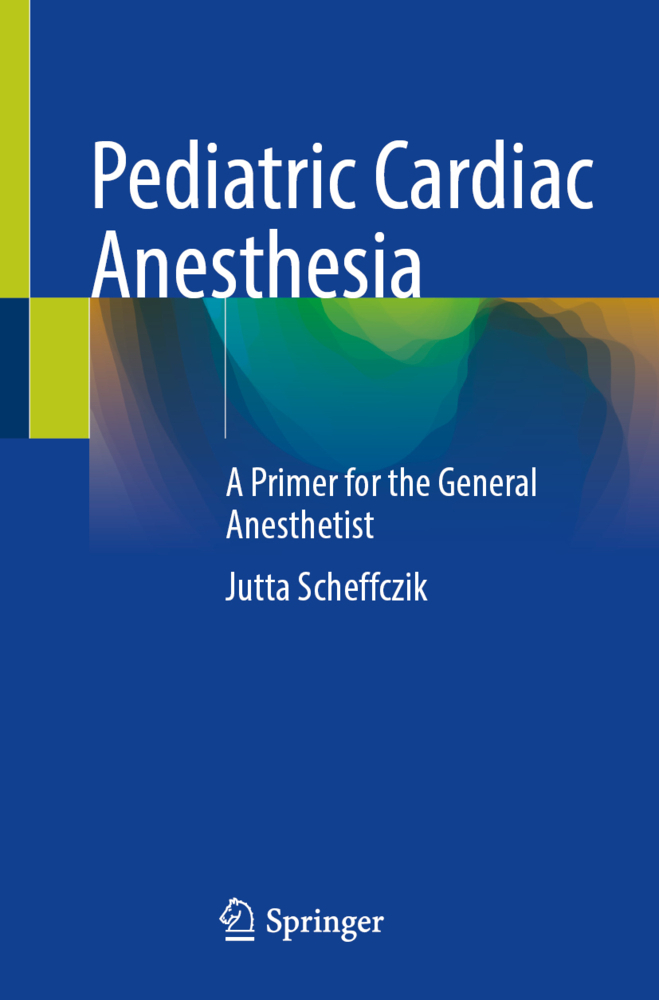
Zustellung: Sa, 12.07. - Mi, 16.07.
Versand in 5 Tagen
VersandkostenfreiBestellen & in Filiale abholen:
This book outlines how to approach the anaesthetic for congenital heart disease patients for non-cardiac surgery, how to plan for it and to provide a blueprint on how to anaesthetise any congenital cardiac lesion. It describes the physiology of congenital cardiac conditions (unrepaired and repaired) which is important for anaesthetic planning and contains anatomical drawings of the lesions with explanation on how the physiology of these lesions influences anaesthetic technique and how anaesthesia influences the lesion. One of the challenges of congenital cardiac conditions is their variability, which needs to be taken into account in any teaching material. With most congenital patients surviving to adulthood, every anaesthetist will come across these patients, regardless of where they work or which specialty they anaesthetise for.
Paediatric Cardiac Anaesthesia: a Primer for the General Anaesthetist provides specific information regarding the management of patients with a cardiac lesion and the risks with a general anaesthetic when troubleshooting does not include crashing onto cardio-pulmonary bypass. It is aimed at non-cardiac anaesthetists including anaesthetic trainees who need to learn about congenital cardiac lesions and anaesthetising for it and non-cardiac consultants who anaesthetise cardiac patients (both paediatric and adult) for non-cardiac surgery. It can be used by trainees for learning about it or by consultants for refreshing their memory.
Inhaltsverzeichnis
1. Anaesthetic assessment and planning. - 2. How to read an Echo. - 3. Cardiovascular Changes at Birth. - 4. Pathophysiology and Anaesthetic Considerations. - I. Lesions. - 5. Anomalous Left Coronary Artery from Pulmonary Artery. - 6. Aortic arch anomalies: Vascular Rings. - 7. Aortic arch, interrupted. - 8. Aortic valve. - 9. Aorto-pulmonary window. - 10. Atrial Septal Defect. - 11. Arterio-Venous Malformations. - 12. Atrio-Ventricular Septal Defect, complete. - 13. Atrio-Ventricular Septal Defect, partial. - 14. Congenitally Corrected Transposition of the Great Arteries. - 15. Coarctation of the Aorta/ Hypoplastic Aortic Arch. - 16. Cor triatriatum. - 17. Double Inlet Left Ventricle. - 18. Double Outlet Right Ventricle. - 19. Ebstein s Anomaly/ Malformation. - 20. Heterotaxy Syndrome, Left Atrial Isomerism, Polysplenia syndrome. - 21. Heterotaxy Syndrome, Right Atrial Isomerism, Asplenia syndrome. - 22. Hypoplastic Left Heart Syndrome. - 23. Mitral Valve. - 24. Pulmonary Atresia with Intact Ventricular Septum. - 25. Partial Anomalous Pulmonary Venous Drainage. - 26. Patent Ductus Arteriosus. - 27. Pulmonary Valve. - 28. Tetralogy of Fallot s. - 29. Tetralogy of Fallot s with Pulmonary Atresia (Pulmonary Atresia with Ventricular Septal Defect). - 30. Tricuspid Atresia. - 31. Tricuspid Valve. - 32. Total Anomalous Pulmonary Venous Drainage. - 33. Transposition of the Great Arteries. - 34. Truncus arteriosus. - 35. Ventricular Septal Defect. - II. Operations. - 36. Central shunts. - 37. Damus-Kaye-Stansel operation. - 38. Glenn shunt. - 39. Hybrid procedure for Hypoplastic Left Heart Syndrome. - 40. Norwood operation. - 41. Palliative procedures. - 42. Operations for aortic valve. - 43. Switch operations. - 44. Total Cavo-Pulmonary Connection (Fontan Circulation). - Index.
Produktdetails
Erscheinungsdatum
24. Juni 2025
Sprache
englisch
Seitenanzahl
220
Autor/Autorin
Jutta Scheffczik
Verlag/Hersteller
Produktart
kartoniert
Abbildungen
XI, 210 p. 104 illus., 101 illus. in color.
Gewicht
381 g
Größe (L/B/H)
235/155/12 mm
ISBN
9783031903298
Entdecken Sie mehr
Bewertungen
0 Bewertungen
Es wurden noch keine Bewertungen abgegeben. Schreiben Sie die erste Bewertung zu "Paediatric Cardiac Anaesthesia" und helfen Sie damit anderen bei der Kaufentscheidung.









